Risk Management and Renting Adventure
Published on November 27th, 2017
Oceans may interconnect the planet, but they also act as a barrier, isolating the sailors on opposite shores. Some cruisers and racers bridge the gap, while most keep track of international sailing events and incidents online.
Well-run international regattas, around-the-world yacht races, and the globalization of the boatbuilding industry help to spread the word, but—despite such publicity—not all sailing trends reach the opposite shore. That’s why the crew at Practical Sailor, which specializes in providing unbiased guidance for sailors, does its best to note what’s trending.
Usually, it’s a new boat design or piece of hardware that draws our attention, but in this article, we focus on a seafaring controversy: the growing inclination toward renting adventure.
The new trend offers amateur sailors the chance to purchase a crew slot aboard a powerful, ocean-racing sailboat. It’s like a skippered bareboat junket in the British Virgin Islands turning into a Mount Everest expedition.
But in this iteration, there are fewer Sherpa pros and much more reliance on a paying, rather than paid, crew. The result is a fine line between marketing sailing adventure charters and selling slots in an “extreme sport” encounter.
The first iteration of the around-the-world Clipper Race was more of the former rather than the later. Sir Robin Knox-Johnston, a cofounder of the first Clipper Race and later chairman of Clipper Ventures, has been instrumental in the race’s evolution and its subsequent uptick in vessel design and the nature of the challenge.
The original 1996 event was run using eight Clipper 60s designed by David Pedrick. These masthead cutters, which were used for the first four races, more closely resembled the venerable Camper Nicholson cruiser/racers and sail-training vessels of the era.
In 2005, a new fleet of ten Dubois-designed, 68-foot cutters delivered more performance for the next four races. And now, a fleet of 12 70-footers designed by Tony Castro are crossing the oceans, and any hint of a cruising boat seemed sidelined in favor of a proven ocean-racer pedigree. First used in the 2013 edition, they are currently in their third race.
The routes to be sailed were more demanding downwind legs, and when the 68s came online, there were reliable reports of surfing speeds approaching 30 knots. The masthead in the Pedrick 60 was 75 feet above the water, and now the spar in the Clipper 70 is 95 feet tall.
But as the boats have become much more turbo-charged, requirements for the crew have remained being that “no previous sailing experience necessary…. a good fitness level, over 18 and a thirst for adventure,” as the Clipper website explains.
Until this past year, the safety record had been good, and questions about crew competency and the seats-for-sale approach to sailing adventure had remained muted. But when Andrew Ashman, 49, aboard IchorCoal, was hit by the mainsheet tackle and killed in 2015, lingering questions began to rise about skill level and the pay-to-play, big-boat oceanic racing format.
Several months later, Sarah Young, 40, another crewmember aboard IchorCoal, tragically perished in a crew-overboard incident. Two deaths on the same vessel, in the same race, tipped the scale, and while the European press featured summaries, analysis, and memorial tributes, the commentary in the U.S. sailing press has been pretty scant.
The reason that Practical Sailor is wading into the fray is the universal importance of individual risk awareness. By understanding where we are on our own risk/reward scale, we can make better decisions about whether or not to reef, carry on, or head for safe shelter.
But when big names in sailing offer the ultimate adventure and promotional dollars gild the package, there’s a feeling that one can skip the apprenticeship in big boat, offshore racing, and simply pick the skills up along the way.
There’s nothing new about events based on the idea that “if their check clears,” you’re on the team. Whether it’s a sailing regatta, mountaineering experience, helicopter powder skiing, or other high risk/high reward activity. However, most organizers weigh participant skill level, and it plays into determining how to safely deliver the desired outcome. Most want to see more in a prospective customer’s resume than their fitness level and commitment to a quest for adventure.
It’s true that to be completely safe under sail means that the dock lines will remained fastened more often than not. But the flipside of this safety/risky coin may mean that one must be willing to count on good luck and faith in others to pave the way through the tougher challenges. The more experienced and capable the crew, the less luck one needs.
But the need for luck returns when there’s only an experienced skipper aboard an unforgiving, 70-foot ocean racer, and he must also run a sailing school afloat—all while power-reaching through some of the world’s most challenging seas.
The U.S. yachting press does a great job of being an upbeat, cheerleader for the industry. We agree that sailing is something to lavish with enthusiasm, but the best way to do it is to be realistic about the challenges and to keep reminding readers about what happens when they are caught unaware of an impending consequence.
In June 2016, during a race from New Zealand to Fiji, the mainsheet failed aboard the Ron Holland, 65-foot sloop Platino. The flailing boom hit and killed boatbuilder Nick Saull. In the ensuing chaos, another crewmember was swept overboard and lost at sea.
A couple of months earlier, the crew of Clipper Round the World Yacht Race boat LMAX temporarily stopped racing to check on and lend assistance to the dismasted sloop Sayo. A crewmember from the Clipper 70 volunteered to swim to the apparently abandoned vessel and found the skipper deceased below decks. Authorities were advised of the situation, and the Clipper crew provided position details. A month later, Sayo was rediscovered near the Philippines and taken in tow.
It’s unlikely that Ashman or Young assumed that perishing at sea was a plausible outcome to their Clipper Cup adventure. Only those aboard IchorCoal really know what happened in each incident, so rather than playing Monday-morning quarterback, we assembled a small team of experts to look into the inherent risks involved in ocean sailing.
The team included an ex-fighter pilot, a naval architect, and PS Technical Editor Ralph Naranjo, an author and well-known player in the safety-at-sea lecturing circuit. For full report, click here and scroll down to PS Risk-management Panel.
Editor’s note: With regard to the Clipper Race, what this report omits is how there are four levels of mandatory training which all Clipper Race Crew must complete before their race, with each level taking a week to complete (details). What we don’t know is if this training has evolved at the same pace as the performance in the boat, a worthy question as this report also omits a remarkably successful MOB during the 2013 edition and the recent tragedy of Simon Speirs during the current race.

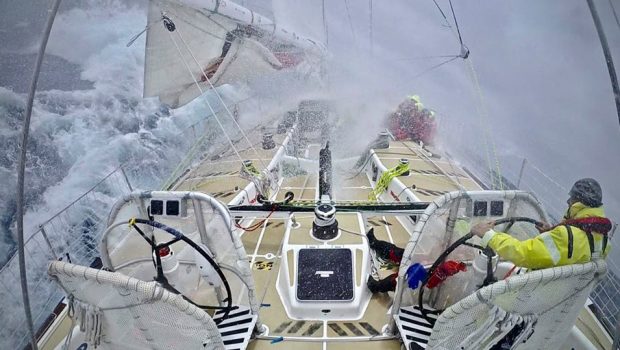


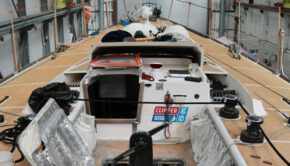
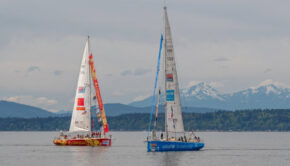
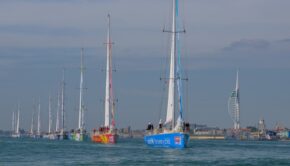
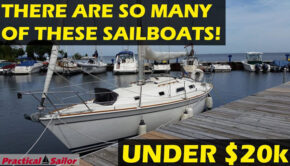
 We’ll keep your information safe.
We’ll keep your information safe.